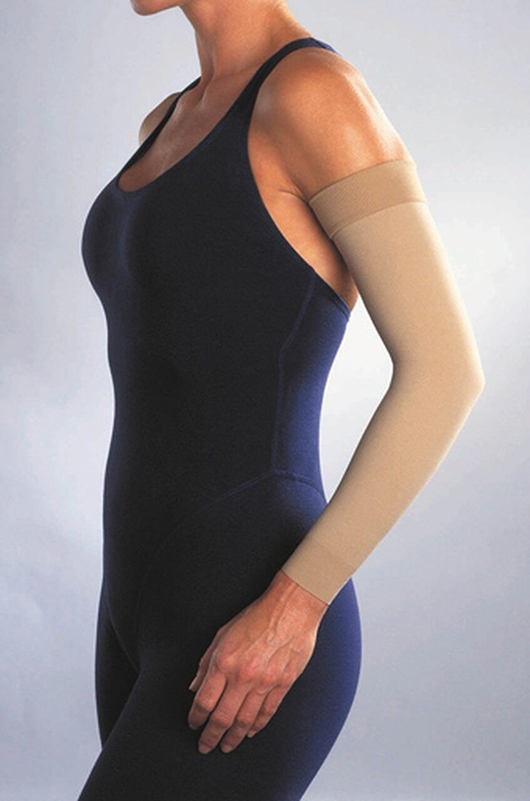What Do Compression Arm Sleeves Actually Do?
Dec 7th, 2020
If you are scheduled to undergo mastectomy surgery or lymph node removal, your doctor may have recommended that you wear a compression sleeve following the operation. But what are compression arm sleeves, what do they do, and how can they aid your recovery after breast cancer surgery?

A compression sleeve is made of flexible stretch material and extends from your wrist to your upper arm. Some models also anchor over the thumb and palm of your hand, while other sleeves are designed to be worn with a gauntlet to provide pressure to the wrist and hand as well.
The sleeves are commonly used to prevent and treat Lymphedema, which may occur after breast cancer surgery if the natural flow of lymph fluid is disrupted, causing pain and severe swelling in the arm.
If you’ve ever tried compression therapy for health reasons or as an athlete seeking quick muscle recovery, then you know it can have varying effectiveness depending on the pressure being applied. But if you’re new to using a compression aid, learning how and why a sleeve works will encourage you to maintain a recommended schedule to benefit as much as you possibly can.
What are the Health Benefits of Wearing Compression Arm Sleeves?
The graduated compression design is what makes these sleeves so effective. A compression sleeve applies constant pressure on the arm muscles, but at different levels. Near the wrist, it provides the highest pressure. As the sleeve makes its way up your arm and toward your heart, that pressure becomes less.
This gradient pressure helps move the lymphatic fluid that gathers in the lower extremities and increases blood circulation. This, in turn, helps to reduce excessive swelling and pain and provides a higher level of comfort in the weeks following your surgery or treatment.
In addition, the pressure provided by compression sleeves can help limit infection. When lymphatic fluids build up in an area, it becomes prone to bacteria build-up, leading to severe infection. Taking steps, such as compression therapy, to reduce this risk is vital after surgery, as you may already have a lowered immune system.
Along with the fluid build-up associated with lymphedema, oxygen-rich blood cells may be blocked from flowing into tissues. This can result in slower healing, which can cause not only additional physical pain but also affect you emotionally. Compression therapy is a way to help your body heal naturally and quickly.

Managing lymphedema is key, and with compression garments, you can do so in relative comfort and ease. Follow your doctor or therapist’s recommendations for wearing your sleeve. Also, ensure you find one with a perfect fit and the correct pressure for your needs.
The JOBST Armsleeve is available in two pressure levels, 15-20 mmHg and 20-30 mmHg, with the higher level ideal for preventing lymphedema after breast cancer surgery. The sleeve is made from air-permeable fabric to let your skin breathe and manage your body temperature, while the lightweight knit is easy to put on and comfortable to wear all day long.
In addition to treating lymphedema, compression sleeves are often worn during physical activities. Athletes wear them for protection from the sun when outdoors, temperature regulation, and help muscles recover faster by removing lactic acid build-up. The compression helps improve blood circulation to injured areas as well.
Players wear arm sleeves to prevent muscle soreness, with the compression loosening up muscles, so performance is not hindered. They also provide UV protection when playing outdoors.
Final Words
Compression sleeves are an essential part of your post-surgical recovery, and finding the right sleeve is vital to feel the full benefits. Explore our range of compression therapy garments online, or call us at (877) 413-2272, and we’ll help you find a perfect match.



